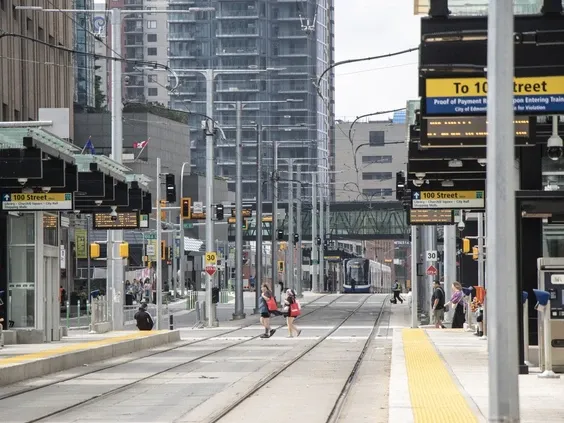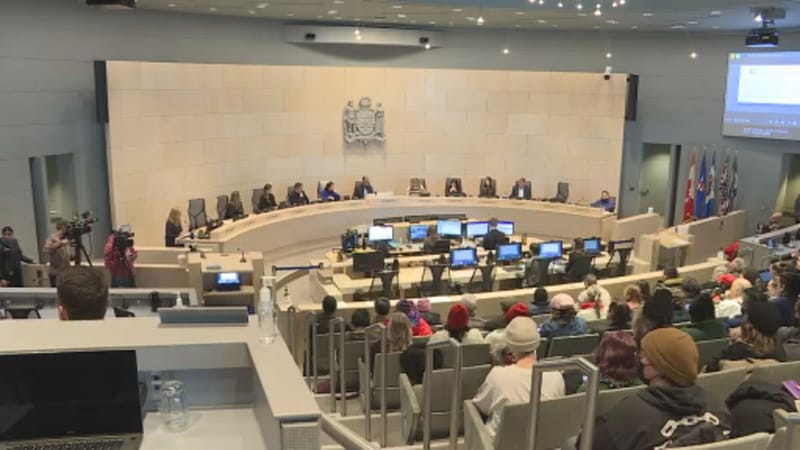Edmonton businesses launch $427 million Downtown investment plan
A group of Edmonton business and Downtown organizations have targeted 19 investments totalling nearly a half-billion dollars to improve Edmonton’s core.

A coalition of Edmonton businesses and Downtown organizations has proposed 19 investments totaling nearly $500 million to enhance the city’s core.
"We don’t get what we don’t ask for,” stated Jason Syvixay, vice-president of strategy and operations for BILD Edmonton Metro.
On Wednesday, BILD Edmonton Metro, the Downtown Revitalization Coalition, the Edmonton Chamber of Commerce, the Edmonton Downtown Business Association, NAIOP Edmonton, and BOMA Edmonton jointly released a Downtown Investment Plan document. Co-authored by Syvixay and Alexandra Hryciw, chairwoman of the Downtown Revitalization Coalition, the plan aims to outline areas for investment in Downtown that the business community can collectively support.
The short-term projects include expanding the city’s cleanliness initiative ($3 million), supporting a downtown affordable housing fund ($100 million), and a neighborhood renewal program for Downtown ($30 million over three years), among others. Medium and long-term projects involve revitalizing the city’s downtown LRT entrances ($25 million) and exploring a direct rail connection from Edmonton International Airport to Downtown ($25 million).
The plan starts with the assertion that Edmonton’s Downtown is under-performing, as indicated by the document’s data. Syvixay explained that downtown areas in major cities typically occupy less geographic space while generating significantly higher economic output. However, their research revealed that Edmonton’s downtown core, which once represented 10 percent of the municipal tax base, has declined to just 6.4 percent in 2024.
Hryciw called this shift “shocking.”
“It’s also shocking that we don’t have these numbers readily available and that we aren’t discussing this more frequently,” she added.
She expressed concern over the lack of consistent economic data from the downtown region and hopes to encourage changes that will lead to more reliable economic statistics moving forward.
Despite numerous issues facing Edmonton’s Downtown—such as homelessness, insufficient density, and high office vacancy—Syvixay noted that the city has demonstrated considerable foresight in its planning efforts. He pointed out that the city has developed more than 10 planning documents over the past nearly three decades.
“I appreciate planning, but I don’t want our city to become paralyzed by planning processes,” Syvixay remarked.
“We have many effective tools; we just need a proper funding mechanism and a coordinated request.”
To ensure the investment projects in the plan were well-coordinated, the Chamber of Commerce engaged its affiliated businesses to gather their priorities. Heather Thomson, the chamber’s vice-president of strategy, research, and engagement, noted that businesses, even those outside the core, showed strong support for downtown revitalization efforts.
“I was really impressed and surprised by how there weren’t many conflicting demands or investment requests,” Thomson said.
NAIOP Edmonton CEO Anand Pye emphasized that the plan’s strength lies in the widespread support it has garnered and its straightforward nature. With backing from much of the city’s business community, he believes the plan can effectively break down requests into manageable components, facilitating a systematic approach toward achieving a unified goal.
“We’ll actually be able to seize those opportunities, because we’ve been able to gather all of our different groups together to be on the same page,” Syvixay added.
The authors of the plan noted they worked at the “pace of industry,” completing it between June and September. Hryciw highlighted that speed is crucial in both planning and investment.
“The longer we delay in developing a perfect plan or a flawless strategy, the more money we lose,” she explained.
“We need to be hyper-aware that every time someone comes to town for the rodeo, an Oilers game, or a show at the Winspear, that’s a potential investor.”
Among the many proposals put forth in the plan, Pye, Syvixay, Thomson, and Hryciw expressed optimism about securing funding for improved cleanliness in the core.
“We already have funding for it, and expanding it appears to be a relatively easy request with a significant impact on the community,” Thomson noted.
Hryciw likened it to cleaning a house.
“Investors view your downtown as the living room of your home; you should always tidy that up first and allow them to explore the rest of the house when they have time,” she said with a laugh.
The document also emphasizes the need to increase housing density in the downtown area. With NorQuest College and MacEwan University adding over 30,000 people to the region, there is a growing demand for housing in Downtown.





